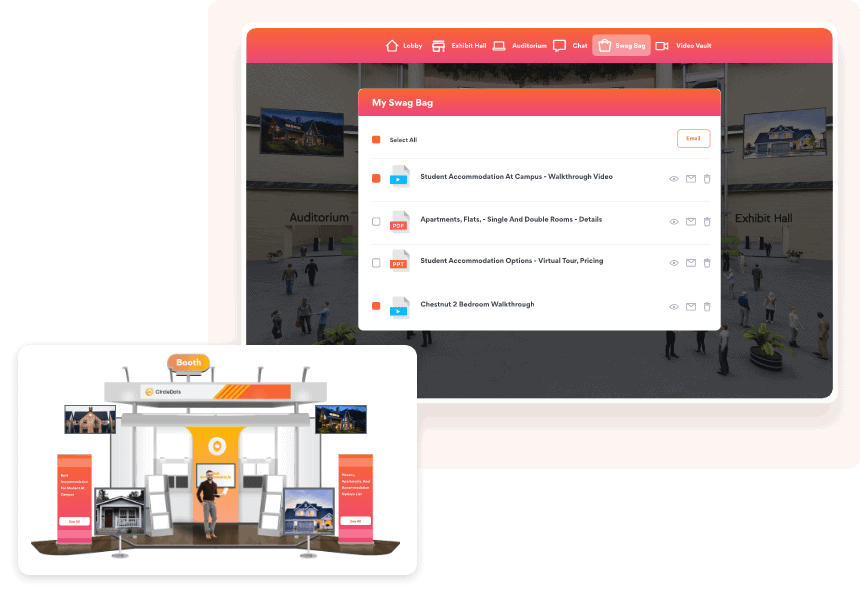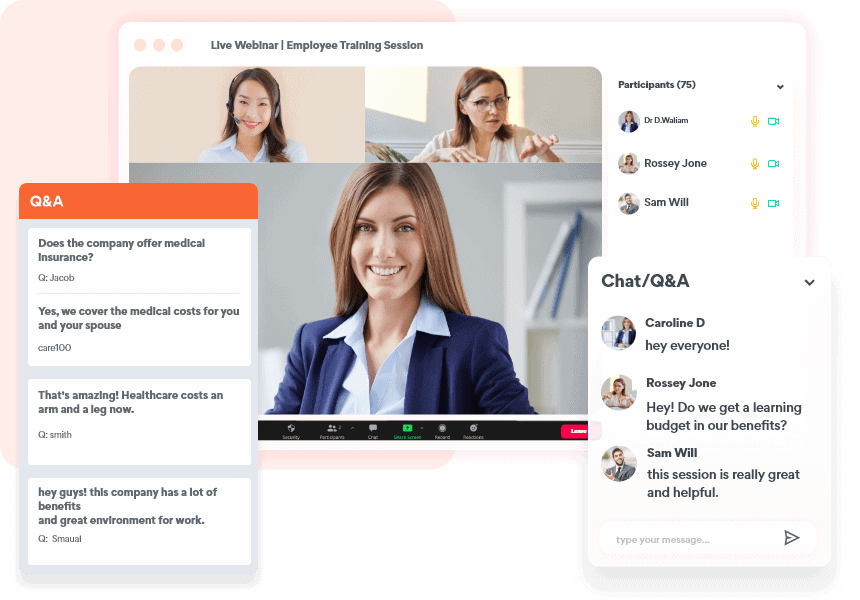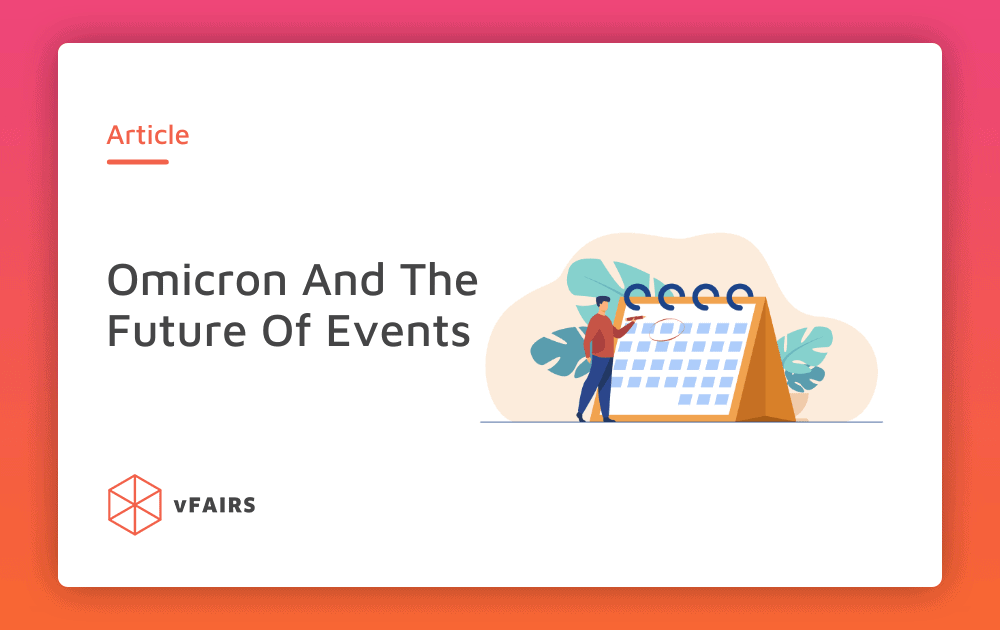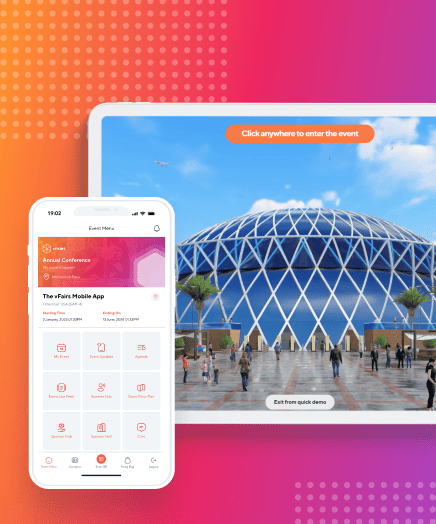Just as we thought the world was opening up, our hopes were dashed. The Omicron variant has the event industry second-guessing its in-person strategy for 2022. The pandemic has entered its third year.
Predicting how viruses will evolve is not possible. All we know is that they will evolve no matter what. Scientists in South Africa have determined that Omicron is much more transmissible than the Delta variant. However, they’re also saying that it might not be as serious an illness like the previous ones.
It is estimated that nearly 80% of populations in high-income and middle-income countries have been vaccinated. Whereas up to 60% of lower-middle-income countries have been vaccinated. However, only 20% of low-income countries have been vaccinated. This shows some promise. But things are still hanging by a thread.
What does this mean for the future of in-person events?
1. COVID-19 Will Become Endemic
The prediction now is that COVID-19 is here to stay. However, like the flu, it will just be something people contract. Now that we know a little more than we did when it started, treatments will hopefully also become more effective. Vaccines seem to be protecting us well thus far and are now being extended to children under the age of five in the U.S. The rate of deaths has also gone down as vaccinations have gone up. Technology is adapting to become contactless. All in all, it is not as scary as it was in March 2020.
This does not mean we let our guard down. We still don’t know much about this virus and only time will really tell. Mask mandates will most likely persist and countries, companies, and organizations will impose vaccination as a mandatory requirement. In recent history, this has not sat well with the public, sparking protests and unrest in 2020 and 2021.
This most likely means that safety is still a top priority. The virtual world is here to stay and we may have to work with hybrid experiences. Hybrid events offer the opportunity to offer both physical and virtual perks. Though challenging at first, it seems it has made headway.
According to a poll conducted by vFairs, 72% of individuals said they would prefer either a hybrid or exclusively virtual events in the advent of Omicron. Only 28% said they would prefer live events. So people are still leaning towards virtual and hybrid events as we enter 2022!
Want To Learn More About Hybrid Events? Read Our Hybrid Events Guide.
2. Travel Restrictions Will Come Back
2020 and 2021 weren’t great for travel. Planes are flying half full at best. The latter half of 2021 spelled better prospects as airfares surged and people started heading home. With Omicron, however, new travel restrictions have already been posed in up to 43 European countries.
It is predicted that 2022 might show better prospects however not entirely those of pre-pandemic. Only three countries currently are allowing travelers without any restrictions – Costa Rica, Mexico, and Colombia. Other countries still have some restrictions whereas some have very harsh ones.
Regional travel has picked up worldwide, however, concerns remain for international travel. More travel will be for the purpose of leisure. Businesses have adapted well and are more likely to remain online. Online training, meetings, conferences, and other events are likely to continue.

3. Work From Home Will Continue
Like 2021, the new variant has changed plans for returning to work. The pattern is the same, of course. Remote work shall persist. According to a survey, 67% of white-collar workers are and have been working fully remote. Most employees are hoping that remote work is here to stay, or that hybrid options, with some days in the office and some at home, are made available.
People have come to realize that their work can be done from home. 70% of those working hybrid say that they want the hybrid format to continue.
Why? People offered four reasons:
- They are not consumed by stressful travel times.
- They can spend time with their family. In fact, people left big cities in throngs, to be with their families in smaller cities.
- They have found flexibility in how they spend their day.
- They can now focus on their well-being and self-care.
The future of face-to-face is still shaky. Whether companies want to stick to in-person meetings or to the virtual world depends now largely on their own preference. But let’s not say goodbye to online meetings and webinars just yet. We only have to create more engaging virtual environments.

4. Unemployment and Job Availability, Both On the Rise
Existing Jobs
Unemployment and job availability seem to be at odds. According to the Bureau of Labour Statistics, 9.2 million job openings were available in May 2021. However, only 5.9 million people were hired. It seems the kind of jobs available are not what people are looking for. People have also had ample time to reassess their careers and goals.
Many companies expect their employees to come back full-time at some point. However, with the flexibility employees have had, they no longer wish to do that. Thus, there seems to be a mismatch between companies and employee expectations. Maybe they are still skeptical about hybrid events. Here are some hybrid event myths vFairs has busted for you.
Unemployment
Yet, those of us who have the option to work from home are lucky. 75% of those who wish remote work continues, have an annual income of at least $100,000. The pandemic is discriminatory in who experiences the brunt of things.
Low-paying jobs were the ones worst hit. In the United States, unemployment jumped to 4.8% in September 2021. This was from 3.5% in April 2020. Black and Latino workers faced slower job recovery than their white counterparts. This only highlights structural racism and poverty. Lower-income households moved back to their original homes due to job loss and high living costs. Omicron will most likely see this trend persist.
This poses a challenging and entirely new environment for job seekers and providers. Universities, businesses, and employers will have to adapt according to social and economic changes. The job market is unusual and anyone holding a career fair or job fair will have to plan with the times. What skills can they offer job seekers? What opportunities are available? Are these opportunities good to survive in the new world? What kind of strategies do job seekers need for their job hunts?

5. Businesses Will Restructure Their Strategies
The pandemic has affected businesses both large and small. Especially with Omicron on the rise. Disruptions occurred in sales and supply chains. Unemployment is at an all-time high. Employees are demanding more flexibility. Customers are changing their behaviors. Businesses have to strategize accordingly. They have still now adapted to COVID-19 or any such external shocks.
The virus isn’t the only thing that can evolve at a fast pace. Businesses have transformed and adapted with the times. Trends that were present in 2021 seem to be persisting into 2022. This includes a move to digitization, artificial intelligence, and automation.
Businesses have shown us nothing is impossible. Everything from motor shows, property shows, food shows have also made it to the virtual world. We have to a degree already entered into the metaverse.
With cost savings and more global reach through the virtual world, they have tapped into something previously unknown.
In Conclusion
With Omicron, some patterns seem to be continuing in the near future. However, the last two years forced us to adapt. It is up to us how we can profit from these changes.
The future, thus far, is hybrid. Businesses need to begin investing in this virtual and physical reality.


